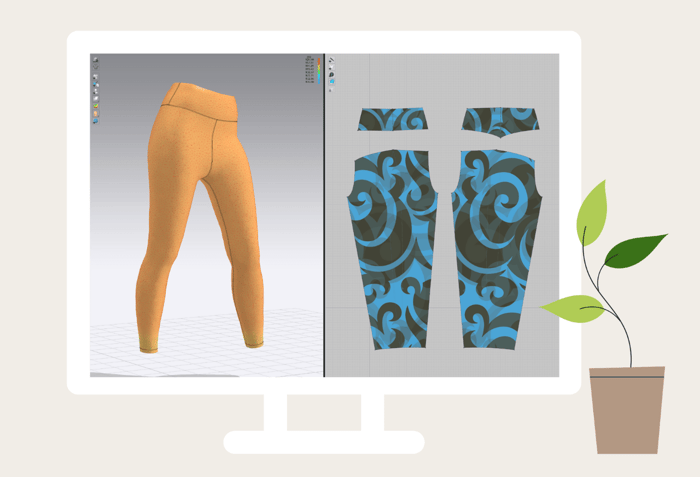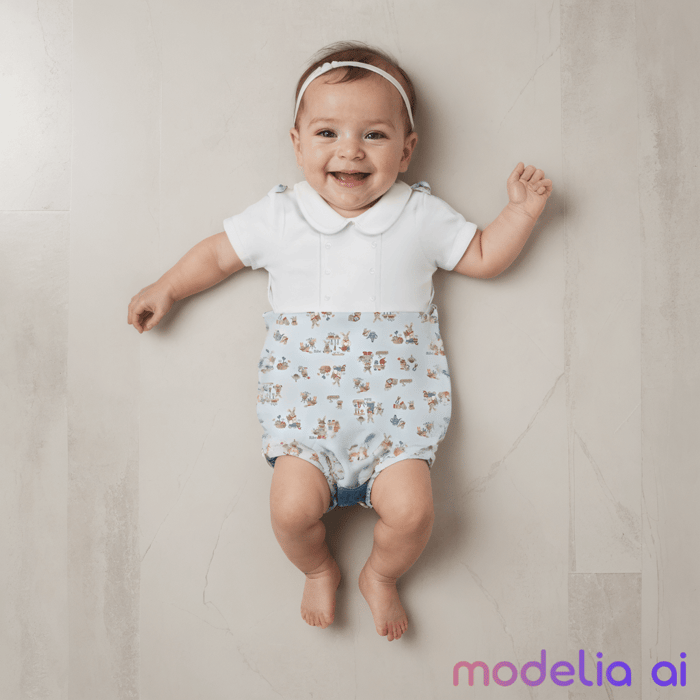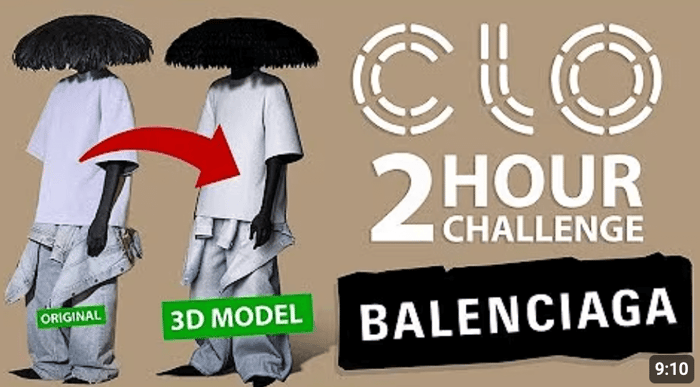3D Fashion Design: Revolutionizing Fashion with Cutting-Edge Technology
Table of Contents
Fashion and technology have always gone hand in hand, from the invention of the sewing machine or he power loom to the rise of digital printing. This fusion has led to the development of 3D design today. 3D fashion design is transforming the industry, pushing the boundaries of creativity and efficiency.
This technology is reshaping how designers conceptualize, create, and present garments, offering a new approach that blends artistry with digital innovation.
With the growing social awareness about sustainability and the need to be aware that our resources are limited and we must learn to use them in a conscious and environmentally friendly way, 3D design has emerged as a solution to this problem. This type of design reduces waste, speeds up development, and enhances the way fashion is experienced. With virtual garments, digital prototyping, and immersive fashion shows becoming more common, it is clear that the future of fashion is no longer limited to physical fabrics and traditional manufacturing, instead, it is expanding into a digital kingdom where imagination has no limits.

What Is 3D Fashion Design?
3D design involves using software to create a mathematical representation of a three dimensional object or shape. In the case of fashion, it involves creating garments using software that allows them to be developed and visualized in a digital space, displaying them in three dimensions.
Unlike traditional methods, where the process began with hand sketching and then moved on to creating patterns and adjusting them through testing until the result is perfect, 3D design makes it possible to reduce both, the time spent and the materials used, turning a process that once took days into something that can be done in hours.
One of the main advantages of this type of design is its ability to accurately simulate different types of fabrics, including their textures and how they drape. Each 3D garment can stretch, move, and fall just like its physical counterpart. This also opens the door to greater experimentation, since testing a design doesn’t involve using actual fabric. That’s especially valuable when working with expensive materials, where a failed test could result in unnecessary waste.
As I mentioned before, 3D design is a huge time saver, as the designer can quickly change the fit or color of a garment. This is well reflected in the video below, in which a Balenciaga runway model is replicated in just two hours, something that would take days to replicate without this tool.
The Evolution of 3D Fashion in the Industry
The integration of 3D design into fashion did not happen overnight. Early adopters of this technology experimented with digital tools to visualize garments, but limitations in software and computing power slowed widespread adoption. However, as technology advanced, so did the possibilities for digital fashion.
One of the first significant shifts occurred when fashion brands began using 3D modeling for product visualization. Instead of relying solely on sketches and fabric swatches, designers could create digital prototypes that allowed them to assess proportions, textures, and overall aesthetics before production. This approach reduced the need for multiple physical samples, cutting costs and minimizing material waste.
As software became more sophisticated, brands started exploring the use of 3D fashion in virtual showrooms and digital presentations. Instead of traditional runway shows, designers began showcasing their collections through immersive digital experiences, allowing global audiences to interact with garments in a virtual space. The rise of virtual influencers and digital fashion collections further solidified 3D design as a fundamental part of the industry.
The global shift toward sustainability also played a major role in accelerating the adoption of 3D fashion design. With increasing concerns about waste and overproduction, brands saw the potential of digital design to create a more responsible production process. By eliminating excess samples and reducing material waste, 3D fashion became a practical solution for a more eco-friendly industry.
Today, leading fashion houses, independent designers, and even e-commerce platforms are embracing 3D fashion design as a core part of their creative process. From high-end couture to everyday wear, digital design is no longer a niche concept—it is a driving force behind the evolution of fashion.
Key Software and Tools for 3D Fashion Design
Some of the most widely used 3D design programs include CLO3D (the one used in the video linked above), Marvelous Designer, and Browzwear, each offering unique features tailored to different aspects of digital fashion creation. These platforms allow designers to construct garments with real textures and precise stitching details ensuring that digital designs are as close to reality as possible.
A particularly innovative platform in this space is Modelia, a tool that allows designers to bring their creations to life with AI visualization. Modelia enables fashion brands to dress virtual models in their collections, producing highly realistic images that can be used for marketing, e-commerce, and digital fashion showcases. Instead of relying on traditional photoshoots, brands can use Modelia to generate professional visuals instantly, making it a game changer for designers who want to present their work efficiently and effectively.

Start bringing your designs to life with Modelia.
3D fashion design: the future of fashion
The rise of 3D design marks a turning point in the industry, offering a perfect blend of creativity and technology. By allowing designers to create, test, and showcase garments digitally, this approach is transforming how fashion is produced and consumed and the ability to reduce waste, speed up production, and experiment with new aesthetics has made 3D design an essential tool for brands seeking innovation and sustainability.
As the industry continues to evolve, this tool will play an even greater role in shaping the future of design. From digital collections to hyper realistic virtual fashion experiences, this technology is pushing the boundaries of what is possible. Fashion is no longer confined to physical fabrics and runways, now the possibilities are limitless, and the future of fashion has never been more exciting.
With platforms like Modelia and its sketch to garment tool, designers now have access to tools that allow them to create stunning, lifelike garments without the limitations of traditional manufacturing.
Subscribe to the Modelia newsletter for the latest updates and tips and stay ahead in the world of fashion AI
How would you rate this article:
Related Articles
- Top 8 Uwear AI Alternatives for E-commerce Fashion Imaging
- Text to Video AI: Revolutionizing Content Creation with Automated Video Generation
- The Art of Hand-Drawn Fashion Sketches in Modern Design
- 10 Best Fashion e-Commerce Sites to Watch in 2025
- 5 Innovation ways to use AI in fashion
- Top AI Fashion Companies Innovating the Future of Fashion with Artificial Intelligence
- Content Marketing for Ecommerce: How to Attract and Retain Customers
- Best AI Clothing Models for your Website Store
- The Rise of AI Beauty: Personalized Skincare in 2025
- The Best Winter Fashion Trends for a Stylish Season

